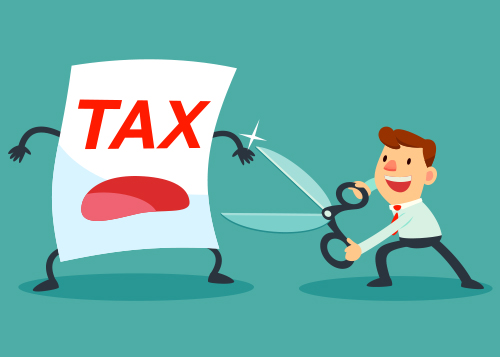It’s probably safe to say that your goal as a business owner is to make, not lose, money. But there are situations in which your company might be able to benefit from business losses.
If your company’s tax-deductible expenses exceed your taxable income in a given year, this results in a net operating loss (NOL). With proper planning, you might be able to use NOLs to reduce your tax liability.
Complex Rules, Simple Concept
The IRS rules about NOLs can be complex, but the concept is relatively simple: NOLs allows businesses to use losses incurred in one year to offset income earned in other years, thus reducing taxable income and the amount of tax due in those profitable years.
NOLs can generally be carried back to the prior two tax years, or the prior three tax years in certain situations. Carrying back NOLs will enable you to recover past tax payments and result in a tax refund, thus boosting your current cash flow.
Alternatively, NOLs can be carried forward up to 20 years. In other words, you can offset income earned in future years with losses your business incurs now. A couple of examples help illustrate how NOLs can save taxes:
Suppose your company has taxable income of $500,000 and deductible expenses of $700,000 this year. This would result in an NOL of $200,000. Last year, however, the numbers were reversed: You had taxable income of $700,000 and deductible expenses of $500,000, or a net profit of $200,000. You could carry this year’s $200,000 NOL back to offset last year’s $200,000 profit, which would result in no tax due last year and a refund of the taxes you paid last year.
Now let’s suppose your company had a $100,000 profit last year and the same $200,000 NOL this year. You could carry back half of your NOL to offset last year’s profit, leaving you another $100,000 to carry forward to offset profits in future years. So if your company has a $50,000 profit each of the next two years, these profits could be offset by the remaining $100,000 NOL, resulting in no tax due either of these years.
Should You Carry NOLs Back Or Forward?
So which strategy makes more sense: Carrying NOLs back to offset income in one or both of the prior two years, or holding onto NOLs to possibly offset future income? The answer depends on several different factors.
First, how is your current cash flow? If it’s relatively strong and you don’t necessarily need a cash flow boost in the form of a current tax refund, you might decide to hold onto the NOL and save it for the future. Of course, this assumes that you anticipate having profitable years in the future.
But you also should consider the time value of money — in other words, the fact that tax savings realized now are inherently more valuable than those realized in the future. According to this thinking, it’s more beneficial to carry NOLs back to reduce taxes in prior years and reap the tax benefits right away.
Another factor is whether you expect your business income to increase in future years and, if so, by how much? Higher business income in future years could push your company into a higher tax bracket. This would make NOLs more valuable in the future because they would be used to offset income that would be taxed at a higher rate.
If you have NOLs in more than one year, it’s usually wise to exhaust all of the NOLs from the first year when they were created before using the losses from more recent years. If you have any remaining NOLs after 20 years, they will be cancelled — so this strategy reduces the risk of losing the tax-saving benefits of your earlier losses.
Tax Reform And NOLs
With the new President Trump administration, there’s been a lot of talk about substantive tax reform. It’s still too early to get a good sense of what that reform might look like, including whether it would impact the strategy of using NOLs to reduce taxes.
So, keep a close eye on tax reform developments going forward. And speak with your tax advisor about their possible effect on this tax-saving strategy.
Donald Trump And NOLs
The issue of using net operating losses (NOLs) to reduce taxes got some attention during the Presidential campaign. Last fall, a major U.S. newspaper reported that it possessed pages from Donald Trump’s 1995 tax return showing he had a tax loss that year of $916 million.
Tax analysts hired by the newspaper then suggested that with an NOL this large, it’s possible that Trump could’ve paid no income taxes for almost 20 years by using the NOLs to offset income in future years.
Trump was criticized by some during the campaign for purportedly not paying income taxes during these years. But if this was due to the proper use of NOLs, then it was a lawful tax strategy.
